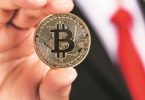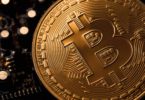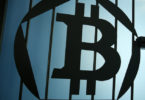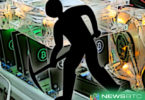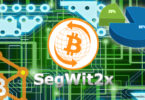Here’s a quiz to test your knowledge of the cryptocurrency
As the world’s monetary systems teetered on the edge in late 2008, some computer whizzes sought a digital solution. As Lehman Brothers lay dying, a math-based, completely digital means of exchange known as bitcoin was born.
A few months after the white paper that defined it, bitcoin went quietly into operation. As with the internet itself, bitcoin’s first adopters were mostly the highly computer-literate and the highly criminal, followed by speculators. The image of the “digital gold” was first tarnished by association with online drug bazaars such as Silk Road and a massive theft called Mt. Gox, and later by price crashes.
This year, bitcoin returned to the headlines. Its dollar-denominated price hit a record in March amid speculation that the Securities and Exchange Commission would approve a bitcoin exchange-traded fund. On March 10, the SEC ruled against it. Later in March, the SEC rejected another ETF application, from lower-profile firm SolidX, citing the same concerns about the lack of transparency and regulation in bitcoin exchanges and markets. But bitcoin’s price remains above $1,000.
Even without the ETF, investors are enticed by bitcoin’s record run and a sense that, nearing its 10th birthday, the cryptocurrency is here to stay. Late last year, five major banks, including J.P. Morgan Chase, Barclays and Citigroup, tested equity-derivatives trading using some of the technology underlying bitcoin.
But how much do you really know about this increasingly high-profile currency? Let’s find out:
1. Who, or what, is known by the words Satoshi Nakamoto?
A. The pseudonym of the individual who invented bitcoin.
B. A California computer engineer who might have played a role in the invention of bitcoin, but denies it.
C. A collection of computer scientists that jointly launched bitcoin.
D. Nobody really knows, but possibly all of the above.
ANSWER: D. One of the most intriguing aspects about bitcoin is the reluctance of anyone to take credit for it. In contrast to Wall Street CEOs and hedge-fund managers, bitcoin’s inventor has scrupulously remained behind a pseudonym that he or she uses for public statements. There have been multiple people fingered as “the” Satoshi Nakomoto, but none conclusively. And nobody has made a public statement under that name for years.
2. In the world of bitcoin, what is the blockchain?
A. The company that owns bitcoin.
B. The software on which bitcoin works.
C. A chunky gold necklace popularized by Mr. T.
D. The time-stamped ledger that records all bitcoin transactions.
ANSWER: D. Whatever happens with the value of bitcoin, the concept of the blockchain will be remembered as the most significant innovation in finance in the past couple of decades. The blockchain is what International Business Machines , which sells a version of it for commercial accounting use, has called a “shared, distributed ledger.” The blockchain has two advantages over other forms of trade settlement: transparency and a self-correcting mechanism. The blockchain is like a massive version of one of those collaborative Excel spreadsheets that anyone in the office can jump aboard. Every transfer of bitcoin appears on the blockchain ledger, recording the coded identity of sender and receiver and the amount transferred.
3. What, according to Satoshi Nakamoto’s October 2008 white paper, is bitcoin made of?
A. Digital signatures.
B. Internet cloud particles.
C. Pixels.
D. Silicon.
ANSWER: A. What you purchase is effectively two sets of numbers. One is a private key, the number that only you—the new owner of the bitcoin—can know, and the other is the public key, which is the address of your wallet, much like a PayPal address. Your public key will appear on the transaction showing your purchase that’s printed to the blockchain. To send your bitcoin to someone else, you must sign the new transaction with your private key.
4. Which of these investments or indexes had the biggest percentage gains in 2016?
A. The S&P 500 index.
B. Shares of detention-center operator CoreCivic.
C. Bitcoin.
D. Copper.
ANSWER: C. Bitcoin’s five-year chart is as zigzag as they get, with a gentle slope leading to a peak in 2014 (around $1,200), and then a drop during 2015 and 2016 to as low as $170 before a rally in late 2016 and early this year back above $1,300. In 2016, bitcoin was arguably the best-performing asset of any in the U.S. financial universe.
5. Who recently had an application for a bitcoin exchange-traded fund rejected by U.S. regulators?
A. Mark Zuckerberg.
B. Satoshi Nakamoto.
C. Cameron and Tyler Durden.
D. Tyler and Cameron Winklevoss.
ANSWER: D. Tyler and Cameron Winklevoss won a large settlement from Facebook in 2010 and sunk a large amount of their winnings into bitcoin and bitcoin projects. The twin brothers filed for SEC approval of their fund in 2014 and submitted multiple drafts of a prospectus that promised to open up investment in bitcoin to the masses—since an ETF would allow bitcoin investment by mutual funds, pension funds and hedge funds. On March 10, the SEC rejected the ETF on the grounds that there were no regulated exchanges. “It sort of feels like they’re putting the ETF in a Catch-22 situation,” says Jesse Powell, CEO of bitcoin exchange Kraken. “where to be traded on a regulated exchange you have to be traded on a regulated exchange.”
6. What is Bitcoin Investment Trust GBTC 0.49% and what happened after the SEC ruling?
A. Tyler and Cameron Winklevoss’s next ETF.
B. An ETF-like fund that trades over the counter on the Pink Sheets.
C. An exchange-traded note that trades on the Nordic Nasdaq.
D. Warren Buffett’s bitcoin company.
ANSWER: B. A funny thing happened on the way to the SEC’s rejection of a bitcoin ETF: The longstanding Bitcoin Investment Trust started acting more like the de facto ETF that some people had predicted it would be all along. The fund averted SEC oversight with an unorthodox design in which primary shares are issued only to high-net-worth investors who must hold them for a year and then sell only on the Pink Sheets. The structure had caused dissonance between the price of bitcoin and the fund’s share price. But as trading in the fund grew ahead of the anticipated Winklevoss launch, the spread between bitcoin prices and the share price on the electronic Pink Sheets narrowed.
7. In bitcoin nomenclature, what is a hard fork?
A. 10,000 bitcoin.
B. Potential split in the bitcoin network.
C. A method of storing bitcoin.
D. German potato delicacy with a crust that’s difficult to penetrate with a fork.
ANSWER: B. Michael Moro, chief executive of bitcoin market maker Genesis Trading, says that everyone in the bitcoin network would like to tweak the underlying software to speed up transactions, which were once instant but have slowed because of high demand. There’s a divide in opinion on how to get there, says Mr. Moro. Miners—the independent programmers who solve the mathematical riddles embedded in bitcoin transactions and so verify them—want to update the bitcoin software unilaterally so they can process more transactions simultaneously. Software developers and bitcoin users and owners want to solve the problem in a way that’s not so potentially lucrative for miners.
With a unilateral update, “once that’s activated, you have to download a brand new version of the bitcoin software. If you don’t, you’ve basically created a second bitcoin,” Mr. Moro says. This could lead to a split in a currency currently valued at $17 billion.
8. What will happen in 2140 if bitcoin markets keep growing at the current pace?
A. The Winklevoss twins will be the world’s richest men.
B. Bitcoin will stop working.
C. Miners will start their own ETF.
D. The last bitcoin will be created by miners.
ANSWER: D. When Satoshi Nakomoto launched bitcoin, it had a circumscribed size limit. To prevent the bitcoin miners from eroding the value of the currency, the reward for “solving a block” of bitcoin would be halved every four years or so. It is currently at $12.50 a block. In about 123 years, the rewards will dry up completely.
Source: https://www.wsj.com/articles/test-how-much-you-know-about-bitcoin-1491790020



